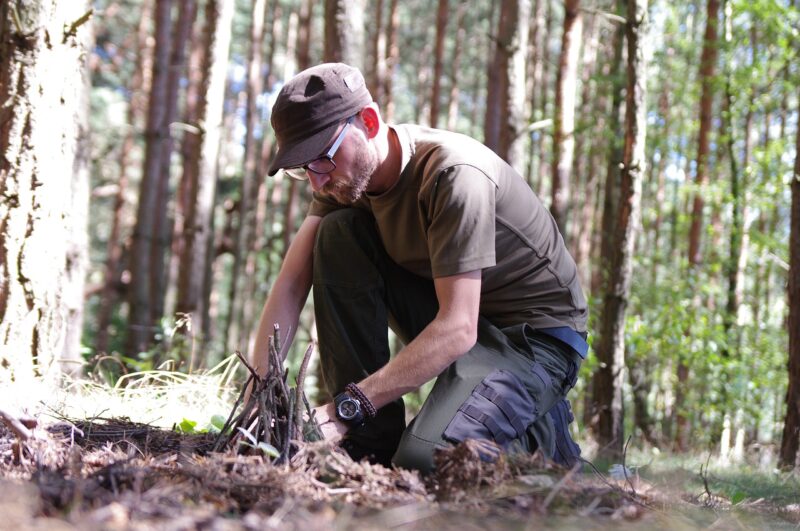The Secret Lives of Plants and How They Survive in Extreme Environments
November 12, 2024

Plants, the silent architects of our ecosystems, have evolved remarkable strategies to thrive in extreme environments. From the scorching deserts to the icy tundras, plants exhibit a unique resilience that is both fascinating and essential for the survival of various species, including humans. This exploration delves into the secret lives of plants, uncovering their extraordinary adaptations and survival mechanisms.
1. The Incredible Diversity of Plant Life
The world of plants is immensely diverse, housing more than 390,000 known species, each adapted to its specific environment. These species can be broadly categorized based on their habitats:
- Desert Plants: Species like cacti and succulents boast thick skin and specialized tissues to store water, enabling them to endure prolonged droughts.
- Tropical Rainforest Plants: Epiphytes, such as orchids and bromeliads, live on other plants to access sunlight without competing for soil resources.
- Aquatic Plants: Water lilies and lotus flowers thrive on water surfaces, exhibiting adaptations for buoyancy and sunlight absorption.
- Arctic and Alpine Plants: Species like moss campion and alpine buttercup have developed low growth forms, enabling them to withstand harsh winds and cold temperatures.
Understanding this diversity is essential for appreciating how unique adaptations contribute to the survival of plants in extreme environments.
2. Surviving the Harshness of Deserts
Desert environments pose significant challenges for survival, including extreme temperatures, scarce water, and nutrient-poor soils. To endure these conditions, many plants exhibit several adaptations:
- Water Storage: Succulents store water in specialized tissues. Cacti, for instance, can endure long dry spells by tapping into stored moisture.
- Reduced Leaf Surface Area: Many desert plants have small or no leaves to minimize water loss. Instead, they conduct photosynthesis through their stems, which are protected by a waxy coating.
- Deep Root Systems: Some species develop extensive root systems that reach deep into the soil to access groundwater, while others have shallow roots that spread out widely to absorb water from light rainfall.
- Drought Dormancy: Certain desert plants can go dormant during severe drought conditions, reducing metabolic activity to conserve energy until conditions improve.
These adaptations not only help desert plants survive but also enable them to thrive, contributing to the unique biodiversity of arid regions.
3. Thriving in the Cold: Plants of the Arctic and Alpine Regions
In the Arctic and alpine environments, plants face low temperatures, strong winds, and short growing seasons. Their survival strategies include:
- Growth Form: Low and Compact Design: Many Arctic plants grow close to the ground to resist cold winds and to maintain heat from the soil. Such compact forms also help conserve moisture.
- Antifreeze Proteins: Some species produce proteins that prevent ice formation within their cells, allowing them to survive freezing temperatures.
- Rapid Life Cycles: Plants in these regions often have accelerated growth phases to take advantage of the brief warm months, allowing them to reproduce before winter sets in.
These adaptations enable plants to not only survive but also to re-establish and reproduce even in these harsh climates.
4. The Resilience of Plants in Flooded Areas
Flooded environments, such as wetlands, present unique survival challenges due to waterlogged soils and limited oxygen. To flourish in these conditions, aquatic and semi-aquatic plants have evolved specialized traits:
- Aerenchyma Tissue: Many aquatic plants develop aerenchyma, a specialized tissue that allows the transport of oxygen from above-water parts to submerged roots, facilitating survival in low-oxygen environments.
- Floating Leaves and Stems: Some plants, like water lilies, have buoyant leaves that float on the surface, enabling them to capture sunlight effectively while submerged in water.
- Rapid Growth Rates: Many flooded plants can grow extremely fast during wet periods to colonize areas before water levels recede, ensuring their dominance in competitive environments.
Through these adaptations, plants continue to provide vital ecological services, such as improved water quality and habitat for numerous species.
5. How Plants Communicate and Adapt
Recent research reveals that plants possess remarkable communication abilities, both with each other and with animals:
- Chemical Signals: When under stress from herbivores or environmental challenges, plants can release volatile organic compounds to warn neighboring plants, prompting them to initiate their own defensive mechanisms.
- Root Networks “Wood Wide Web”: Through their root systems, plants can share nutrients and information, establishing symbiotic relationships that enhance survival chances in difficult conditions.
- Mycorrhizal Associations: Many plants establish mutualistic relationships with fungi, enhancing nutrient and water uptake, which is vital in nutrient-poor soils found in extreme habitats.
These interactions underscore the complex social lives of plants, highlighting their ability to thrive through cooperation and communication.
Conclusion: Lessons from the Plant World
The secret lives of plants reveal an astonishing array of adaptations that allow them to survive and flourish in extreme environments. By studying these resilient organisms, we can learn invaluable lessons about resilience, adaptation, and interdependence—principles that are increasingly important in our rapidly changing world. Moreover, understanding plant strategies can aid in conservation efforts, help develop sustainable agricultural practices, and enhance our knowledge of ecosystems that sustain our planet.
As we continue to unearth the mysteries of the plant kingdom, one thing remains clear: plants are not merely passive organisms; they are dynamic entities with sophisticated survival strategies that shape our world in profound ways.







